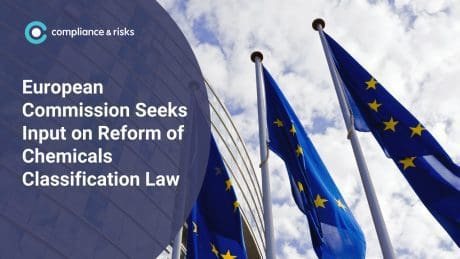
REACH Restriction of Four Phthalates


Bis(2-ethylhexyl) phthalate (DEHP)
Dibutyl phthalate (DBP)
Benzyl butyl phthalate (BBP).
Each of these phthalates were restricted to a maximum concentration of 0.1% by weight of the plasticised material. The amendments from 2018/2005 will take effect on 7th July 2020 and the changes made are as follows:
Diisobutyl phthalate (DIBP) is added to entry 51 and is restricted in toys and children’s products from 7th July 2020.
The maximum concentration limit is changed. The current limit is “Shall not be used as substances or in mixtures, in concentrations greater than 0,1 % by weight of the plasticised material”, but this will change to “Shall not be used as substances or in mixtures, individually or in any combination of the phthalates listed in column 1 of this entry, in a concentration equal to or greater than 0,1 % by weight of the plasticised material” (additional text in bold). Previously if the concentration of each of three phthalates was 0.1%, then a total of 0.3% was permitted. This amendment means that the total of total of all four must not exceed 0.1%. This approach was proposed and rejected by the Commission several years ago as being unnecessary, but has now been adopted.
From 7th July 2020, the scope of the restriction will be an open scope with exclusions. These exclusions mean in effect that it applies mainly to consumer and professional products used indoors and equipment used outdoors where prolonged skin contact occurs. The exclusions are as follows:
1) Industrial and agricultural equipment without contact with mucous membranes or prolonged skin contact (>10 minutes continuous or >30 minutes total/day).
2) Products used outdoors without contact with mucous membranes or prolonged (>10 minutes continuous or >30 minutes/day) skin contact. This is because inhalation exposure can occur from phthalate vapours inside buildings, but levels of inhalation exposure when outdoors is negligible.
3) Vehicles and aircraft placed on the market before 7 January 2024 (the restrictions will apply after this date except for replacement spare parts). The EU End of Life Vehicle Directive (2000/53/EC) has restricted four substances since 2003, but unlike the EU RoHS Directive has no mechanism for restricting additional substances and so new substance restrictions in vehicles are being included under the REACH Regulation.
4) Measuring equipment for laboratories. Note that “professional” equipment is not excluded, only “industrial” as above in bullet 1. “Industrial” is not defined by this regulation, so the exclusion of measuring devices implies that professional equipment that is not used in industrial situations is in scope (unless used outdoors, see bullet 2 above).
5) Medical & medicinal devices and immediate packaging of medicinal products.
6) Food contact materials (as phthalates in these materials are already regulated).
7) Products that are in scope of the RoHS Directive (as all four phthalates will be restricted by this legislation).
Mindful of the above, manufacturers and suppliers of in-scope equipment, products and materials should note that they have 18 months to prepare for compliance. It is advisable to initiate enquiries with suppliers as soon as possible although note that all four phthalates are REACH SVHCs (so Article 33 disclosure is applicable) and if any are present in mixtures of substances (e.g. in paints), they will be included in safety data sheets.
1 https://eur-lex.europa.eu/legal-content/EN/TXT/PDF/?uri=CELEX:32018R2005&from=EN








